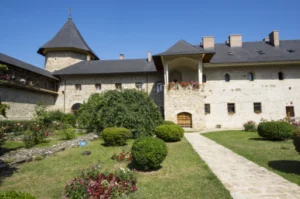Get Ready for a Celestial Spectacle: Blue Supermoon to Light up San Antonio
San Antonio, TX
The Alamo City is in for a celestial treat this week as it prepares for the arrival of the rare blue supermoon. This astronomical phenomenon which is set to occur between August 19 and August 22, promises to be a remarkable sight for skywatchers in and around the city.
When to Catch the Supermoon
If you are hoping to catch the blue supermoon, mark these times on your calendar:
- August 19: The moon will rise around 7:53 PM. Make sure to get to a spot with a clear view of the east in good time to witness its emergence above the horizon.
- August 20: This day will see the moon at its very fullest and brightest, peaking at exactly 1:17 AM. This is the optimal window to witness the spectacle in its full grandeur, and perhaps snap some prize photos.
- August 21 and 22: Even though the moon starts to wane on these subsequent days, it still promises an impressive luminous spectacle. If you missed the peak, these dates present an equally great window to appreciate the moon.
The Science of a Supermoon
Commonly referred to as a supermoon, this takes place when a full lunar phase coincides with its closest swing around Earth. This conjunction is known to occur about three or four times annually. Although the supermoon is not actually larger, it tends to appear so due to its closer proximity to Earth.
For the untrained eye however, discerning between a supermoon and a regular full moon can be near impossible. “Unless you have looked at a lot of full moons or compare them in images, it is hard to notice the difference,” Petro said in an email.
How Do Supermoons Compare?
There will be four supermoons this year – each distinguished by how far away they are from Earth. The ‘blue supermoon’ of August will be at a distance of approximately 224,917 miles (361,970 kilometers) away. The subsequent one will be nearly 3,000 miles (4,484 kilometers) closer on the night of September 17.
Moreover, a partial lunar eclipse will also take place that night, offering viewers, especially in much of the Americas, Africa and Europe, a rare spectacle as the Earth’s shadow falls onto the moon.
What’s in it for Me?
Skywatchers, enthusiasts and scientists alike agree that it can sometimes be easier to detect the change in brightness – a supermoon can be 30% brighter than usual!
With the U.S. and other countries deepening their lunar explorative activities with landers and future astronaut missions, the allure of the moon only continues to be amplified. Petro, a scientist involved in the Artemis program, is thrilled by the renewed lunar interest, “It certainly makes it more fun to stare at,” he remarked.
Whether a seasoned skywatcher or simply looking for a unique way to spend your evenings, the blue supermoon is poised to be a dazzling event not to be missed. So, pencil it into your calendar, set your alarms, and prepare to partake in this rare astronomical phenomenon in the heart of San Antonio.








